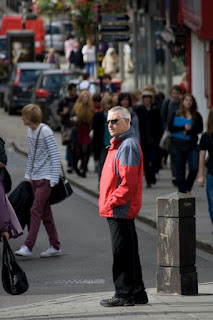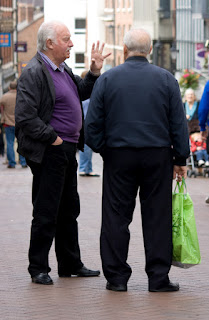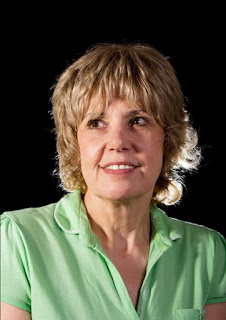The brief was to develop confidence and technique by photographing people unaware. I felt squeamish at spying on them; I'd not like to feel it was happening to me. And concerned at being 'caught in the act' and challenged.
Preparation and Technical
Camera, long lens (55-250mm, mainly used towards the long end), ISO 800, Aperture priority f5.6 to ensure high shutter speed to capture moving targets. Handy guide to the legal aspects of street photography. OCA student card and my own business cards, in case of challenge, and to offer subjects the chance to see their photo on this blog. Never, never, photograph children.
The process was straightforward. Select target; prefocus on the road at the intended distance; point, wait, shoot; realign smartly so camera is not pointing at target. Frequently the target was moving to the side, so it could be allowed to drift out of shot; or lower the camera and brazen it out: don't look at subject.
I grew in confidence.
Some subjects were completely unaware, of course.
.
Reflections are a problem, shooting through glass...
...sometimes they worked to my advantage.
Studying people, I saw that some were confident and some needed reasssurance.
Shame about the pushchair.
Both these men are waiting, but who for? I photographed the man with the pipe on the way to my bench, and he was still there an hour later, for this shot. I don't know how long the other man waited.
The exercise was successful. I'm more confident now about candid street photography, and when I got stiff and cold on my bench I moved about. It's a bit like being afraid of spiders:
It's as difficult for the subject to challenge the photographer
as it is for the photographer to photograph the subject.












































